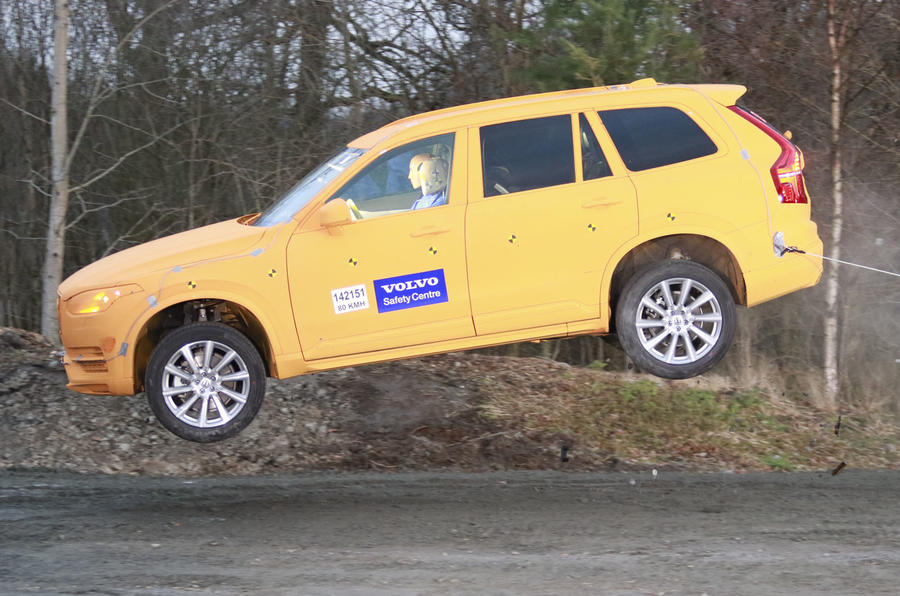You have to feel sympathy for Thor, the driver who ignored the lane departure warning in his pristine new Volvo XC90. The SUV drifted into a ditch at 50mph, after which it was launched into the air before crashing with a thud into an embankment.
It’s just as well that Thor and the family he was carrying aboard his bright orange XC90 are crash test dummies, because even at that speed there was a surprising amount of violent energy dissipated during the accident.
The hapless piece of driving by Thor – I’m not sure if Volvo gives names to all of its crash test dummies – occurred at the car firm's test facility in Gothenburg.
The Swedish manufacturer proudly claims that the new XC90 is the “safest SUV in the world” and is keen to highlight how it has refined its crash test procedures to take into account the kind of real-life incidents that occur on roads around the world.
Real-world accidents are more nuanced than the typical crash tests we’re used to seeing, where a car slams head-first into an unyielding concrete wall. After studying its own vast accident database for common types of real-life incidents, Volvo developed three tests called ‘Ditch’, ‘Airborne’ and ‘Rough Terrain’ for evaluating the consequences of scenarios where a car might run off the side of the road.
The ‘Ditch’ test that Thor got so wrong is designed to replicate the bouncing movement when driving into an 800mm-deep ditch at 50mph and then impacting an embankment.
“We built a replica of a real-life scenario, which you do find on many rural roads,” says Thomas Broberg, a senior technical advisor for safety at Volvo. “As the car gets airborne, it is quite a rough event. The accident involves high speed, vertical loads and a hard landing, and the car’s occupants move around in many different directions. Injuries to the lower spinal area can occur in these types of collisions.”
Volvo has good cause to focus on this type of accident, says Broberg. “From our data, we see that from 1991 onwards that we have made significant improvements when it comes to reducing the total amount of injuries in total in our vehicles," he says.



















Join the debate
Add your comment
Surely...
SAFETY
I always wonder when the